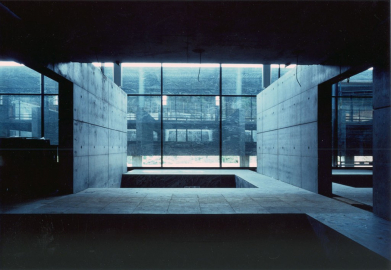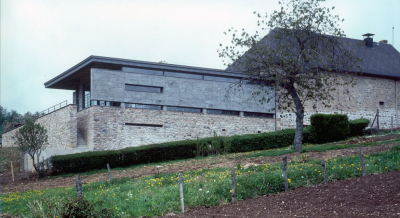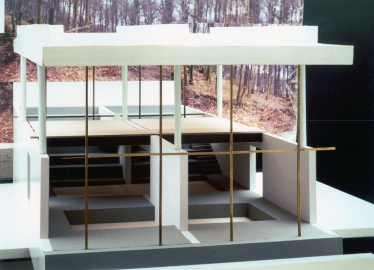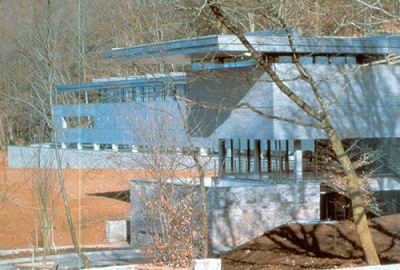European Archaeological Center
The European Archaeological Centre is located some 20 km east of Autun close to Bibracte, the ancient hillside that contains the remains of the first Gallic civilisation. The Mont Beuvray site represented an unhoped-for fund of information for archaeologists. The research centre built there comprises three movements: the excavations of the site proper; a scientific base, installed in the village of Glux-en-Glenne, for the scientists and researchers exploiting the finds; and the museum, located on a ridge lower down the slope, which is nourished by their work and presents it to the public. Topographically, these three places represent the points of a triangle and are all within sight of one another. In establishing the territorial, landscape and architectural layout of this project, the architect has taken advantage of this resonance between the functional diagram and the lie of the land.
The importance in archaeological work of themes of hollowness, excavation and foundations also informed the project. A recurrent system serves as a common base to the different projects contained in the programme. Founded on the setting into place of a coherent and unitary architectural language, the system enables the different dimensions to be regulated on the territorial scale as well as in the details. It introduces a pre-established order that guarantees the insertion and identification of the interventions. The inflexions of their specific characteristics regulate the choices made for each project and they enrich and temper whatever rigidity the system might have in appearance.


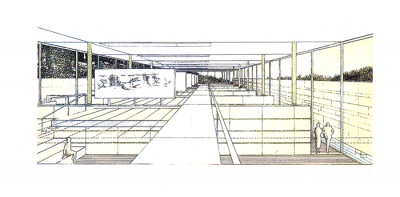
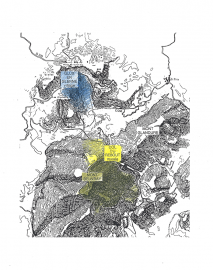
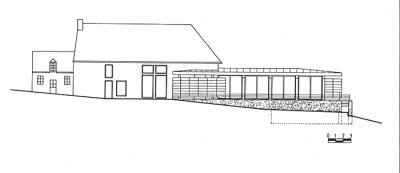
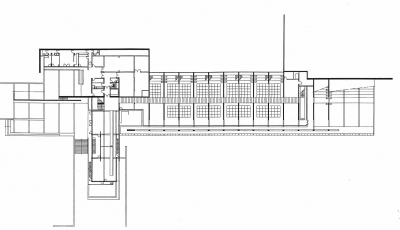
.jpg)
